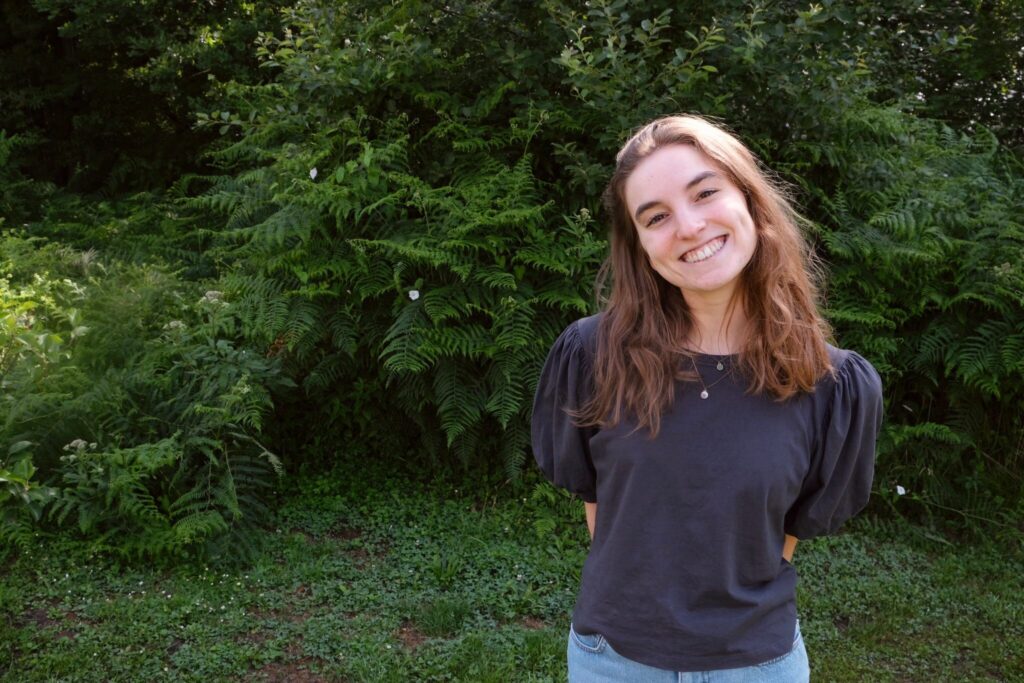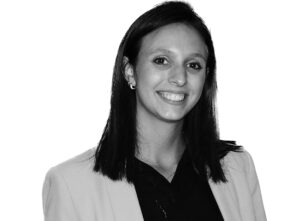ESB Mobility Award Winners – 2023
Laura Müller

Laura Müller is a PhD student in the Mechanics of Biological and Bioinspired Materials (MBBM) laboratory at the University of Liège, Belgium. She started her PhD in 2021, after obtaining a Master’s degree in biomechanical engineering at the University of Liege. For her master’s thesis, she worked in collaboration with biologists to investigate the relationship between feeding habits and material properties of fish enamel. She gained experience in several experimental methods such as nanoindentation, scanning electron microscopy, as well as image processing. Her PhD research targets the interface between bone and cartilage, focusing on different biomechanical and mechanobiological aspects of subchondral bone and mineralized cartilage in adult and aged bone. The goal is to elucidate several unanswered questions on the contribution of mineralized tissues to cartilage degeneration, which is an essential step to design novel therapeutics to treat osteoarthritis.
Planned Research Project
Thanks to the ESB Mobility Award, Laura will travel to the University of Sheffield (UK) for 2.5 months, working with Prof. Enrico Dall’Ara. During the research stay, she will investigate how age-related changes influence the local stresses and strains distribution within the osteochondral junction. For this purpose, in situ compressive tests will be performed within a microCT system on the entire joints to acquire the microstructure of loaded and unloaded specimens. The microCT data will be fed into a Digital Volume Correlation software optimized for bone analysis to compute displacement and strain. The results, combined with nanoindentation-based material properties, will then serve as input to microFE, to investigate the contribution of mineralized cartilage and subchondral bone on local deformation and failure mechanisms.
Sara Montanari

Sara Montanari is a student in Health and Technology PhD Program at the Alma Mater Studiorum – University of Bologna since 2020. She graduated with a MSc in biomedical Engineering from University of Bologna, in 2020 with a Major in Biomechanics. For her PhD, she is now working in the Biomechanical group of the Department of Industrial Engineering at University of Bologna, in collaboration with the Rizzoli Orthopedic Institute of Bologna. Her PhD projects focuses on improving knowledge about the mechanisms leading to junctional pathology in the distal extremity of lumbar spine fixation and on investigating the mechanical stability of different lumbar decompressive surgical techniques by means of in vitro tests and using the Digital Image Correlation.
Planned research Project
‘Assessment of failure mechanisms of lumbar functional spine units under load, combining biomechanical testing and large-volume micro-CT imaging’
Thanks to the ESB Mobility Award, Sara will travel to the Medical Device Research Institute at Flinders University (Adelaide, Australia) for 4 months, working under the supervision of Associate Professor Egon Perilli and Associate Professor John Costi. During the proposed research stay, Sara will work to achieve a better understanding of how intervertebral disc herniate, with a focus on the bony vertebral body and the endplates, by means of large-volume micro-CT imaging and mechanical testing of functional spine units (FSUs) using the Hexapod robot, which permits to apply a multiaxial biomechanical loading.
Anna Ramella

Anna Ramella is carrying out her PhD at Politecnico di Milano in the CompBioMech group of the Laboratory of Biological Structures (LaBS). She got her Bachelor’s and Master’s degrees in Biomedical Engineering at Politecnico di Milano. During the master, she specialized in biomechanics and biomaterials and she gained experience in computational modeling. During her PhD she is dealing with the numerical modeling of the Thoracic Endovascular Aortic Repair (TEVAR) procedure, a minimally invasive vascular technique to treat aortic pathologies. The final objective of Anna’s PhD research is to create a high-fidelity numerical methodology that can accurately reproduce the TEVAR treatment from both a structural and hemodynamic standpoint using finite element analysis (FEA) and fluid-structure interaction (FSI) analysis, respectively. The fully validated methodology could then be used by clinicians such as in the pre-operative planning phase or to better understand possible device-related complications.
Planned research Project
“Validation of a Fluid-Structure Interaction simulation to model the post-TEVAR hemodynamics”
Thanks to the ESB Mobility Award Anna will travel to Aarhus University for three months and she will work with Monika Colombo, PhD, and Prof. Peter Johansen at the CAVE Lab (Cardiovascular Experimental Laboratory). Anna has recently developed a two-way, boundary-fitted, and strongly coupled FSI methodology in which the stent-graft and aortic configurations are the ones resulting from the FEA simulation: the stress/strain distribution on the aorta and device, aortic wall prestress due to blood pressure, contacts between aorta and stent-graft are all included in the FSI framework. Therefore, a V&V of the post-TEVAR FSI methodology following the ASME protocol should be carried out. The project at the CAVE Lab aims to validate a Fluid-Structure Interaction (FSI) simulation before and after thoracic stent-graft implantation with 4D-flow Magnetic Resonance Images (4D MRI) data. The goal is to calibrate the FSI methodology in terms of boundary conditions, and vessel and device motion with hemodynamic information extracted from an in-vitro flow circuit. The circuit will comprise a compliant and patient-specific 3D-printed aortic phantom with known mechanical properties. Once validated, the methodology will be applied to patient-specific cases.







